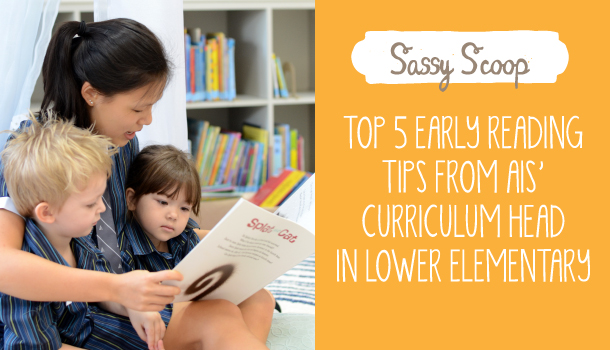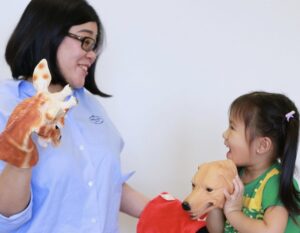
One of the greatest gifts you can give your child is the love of books and the desire to want to read. Encouraging a love of the written word is something all parents can share with their children, so to help us on our quest for improved literacy, we turned to the Australian International School’s Curriculum Head of Lower Elementary, Megan Howard to find out how we can prepare our young ones for their first reading experiences.
The following skills are prerequisites to reading – meaning your little ones need to master these basic skills before they can move onto more complex reading tasks. Try incorporating these activities into playtime and interaction with your child.
1. Direction
We read from left to right in the English language. As parents we don’t tend to think about it too much, but it’s something that has to be learned. Use your finger to run across the words as you read them out loud to your child. You can even guide your child’s finger as you read. Pay closer attention if you have a left handed child. It tends to be a little more difficult for them to grasp at first.
2. Matching
Matching is a part of reading. Sight words (words that littlies are encouraged to memorise as a whole) are all about matching. A child learns first by matching shapes, colours, patterns, and letters before eventually moving onto words. Play as many matching games as possible with your munchkins.
3. Letters
Children need to know that a letter has a name, like “b” and makes a sound, like “buh”. Some letters make more than one sound. They need to understand the concept that a letter has a name and a sound, just like an animal has a name and a sound it makes. Talk about the alphabet with your child and practice the different sounds with them. Games like “A is for Apple, a..a..a” work well.
4. Language skills
The more exposure a child has to language, the easier they will learn to read. Include youngsters in conversations. Create opportunities for them to listen to and read stories. Expose them to simple poetry and rhyme – they’re important genres for children to be familiar with.
5. Rhyming
Children who understand rhyming words are better spellers and better readers. Select children’s books like, “Fat Cat on a Mat” by Phil Roxbee Cox to introduce your tinies to rhyme in a fun manner.
The books you choose and how you read with your children also makes a difference. Repetition is something that may drive you crazy, but it gives children a sense of mastery if they know what is going to happen next.
Here are some landmarks you can look for to see if your child is developing the skills that will help them to become a great reader (keep an eye out from birth until age three)…
- Pretends to read books
- Listens to stories
- Knows the story by the cover of the book
- Knows that the pictures in the book correlate to real objects
- Asks to be read to and reads with others
- Vocalises and babbles in rhyme
- Vocalises the objects in the book
- Is at times, able to distinguish between drawing and writing
Just remember, reading to your child is fun and easy – there’s never a wasted moment when you’re sharing a book with your little one!
To learn more about the Australian International School and their wonderful offerings for families, visit their next Open House on 17 July at 9:30am (don’t forget to RSVP at their website).
Australian International School
1 Lorong Chuan, Singapore 556818
Tel: (+65) 6883 5155
www.ais.com.sg






 View All
View All




 View All
View All









 View All
View All






